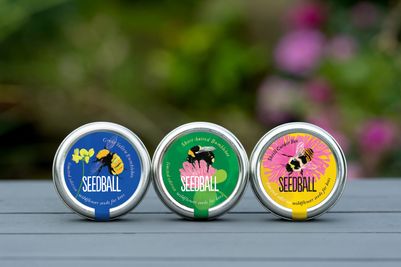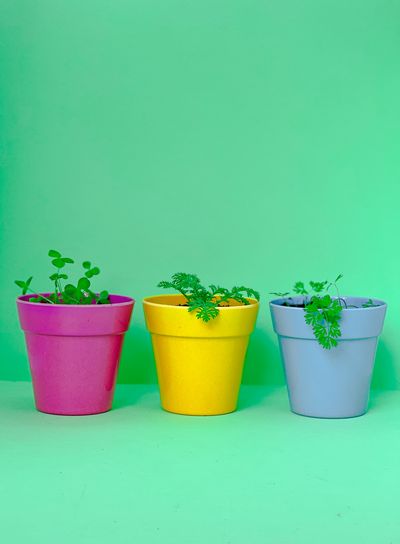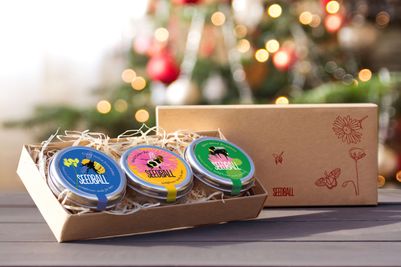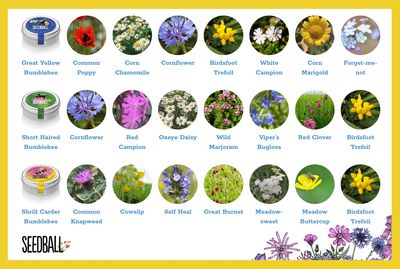How to help bumblebees survive their winter hibernation
Published:
Read Time: 4 mins
As the days get colder and the nights grow longer, wildflower company Seedball has released its top tips to help bumblebees survive their winter hibernation, resulting in a brighter, wilder 2024.
Unlike their honey-making family members, bumblebees are completely reliant on flowers for all their food, and as a result nests have a short, annual lifecycle. At the end of summer, or even sometimes halfway through, when their favourite flowers have started to die down, the bumblebee queen will emerge from her nest to find somewhere cosy and safe to hibernate. Other bumblebees in the nest only have a lifecycle of a few weeks, so will begin to die off naturally.
The queen mates before she goes into hibernation, so is already carrying the next generation of bumblebees when she emerges from her nest in the spring. Therefore, by providing safe spaces to hibernate, people can ensure that they play their part in a flourishing bumblebee population in 2024 and beyond!
Emily Lambert, conservation scientist and one of the founders of Seedball, said: “After taking in nectar and pollen to build up vital fat stores, the next job for a queen bumblebee is to find a spot to hibernate in and avoid the frost. They can choose from a wide range – from burrowing into well-drained, soft soil, to among fallen leaves, inside hollow trees, inside flowerpots or even tree bark. They will often plump for spots that receive less winter sun, ensuring the ground doesn’t heat up and wake them early, so north-facing spots are often popular. It’s also important that their new home doesn’t flood, so they’ll often choose a sloping or raised area. They use their legs to dig holes into the soil for them to sleep in – in fact they can dig up to 10cm!
“Although they very cleverly choose spots that can be ideal, there is a lot we can do to help them find their perfect slumbering spot. One option is to make a log pile for the queen to hide in, and then make sure to then leave it alone so this important bumblebee isn’t disturbed. Or, people could leave dedicated areas of leaf litter or build an open compost heap or raised bed for them to snooze in.
“People could even create a ‘bee bank’, which is a shallow, sloping bank of bare, sandy soil for them to overwinter in. Leaving wild areas with longer grass and moss, and then covering it, can also provide the perfect hibernation spot.
“When carrying out winter or spring jobs in the garden, it’s possible that you could come across a hibernating queen and disturb her. If this happens, just gently cover her back over with the same material that she had dug into and leave her alone. If she is buzzing around and won’t go back into her hibernation spot, place her somewhere sheltered – but never indoors. People can also help by leaving their compost heaps untouched and avoiding digging soil until spring.
“When spring blooms, the queens will emerge from their winter slumber to replenish their energy stores with nectar. This usually happens in late March or early April.
As the months become warmer again, you can then also scatter wildflower seed balls to encourage bumblebees to stay close to home and make their new nest safely. Our Bumblebee Gift Box contains three tins full of wildflower seed balls which are especially designed to appeal to our vital pollinators, such as cornflowers, oxeye daisies, buttercups, cornflowers and poppies.
“As we come up to Christmas, this gift box makes the ideal gift for a keen gardener or wildlife lover, and all those who are looking to make their outdoor space more appealing to insects, butterflies and other wildlife. Pollinators need all the help they can get, as wildflower meadows have reduced drastically over the last 100 years, so this is a really easy way to make a difference.”
To find out more about Seedball visit https://seedball.co.uk/
You can also find Seedball on Facebook, Instagram and Twitter.
Ends
Editors notes
Seedball was founded by two conservation scientists wanting to boost biodiversity and help wildlife.
Seedball Ltd is an innovative organisation on a mission to help increase the abundance of British wildflowers and the wildlife that depends upon them.
Owned by Project Maya – a non-profit enterprise - Seedball manufactures wildflower seed balls using a unique innovation of wildflower seeds mixed with clay, peat-free compost and chilli powder to naturally protect seeds from predators. Its products are sold in over 500 stores in the UK, including Kew Gardens, The Woodland Trust and Blue Diamond Garden Centres, as well as online retailers such as Crocus and Marie Curie. Each year, Seedball also donates products to hundreds of schools and community groups to help support their nature projects.






